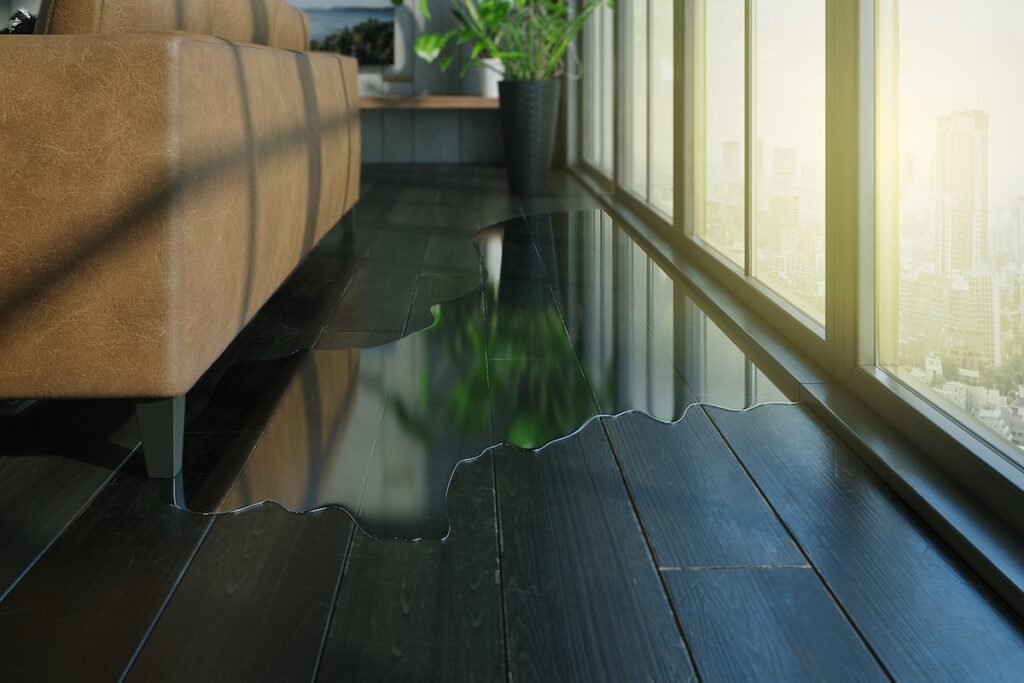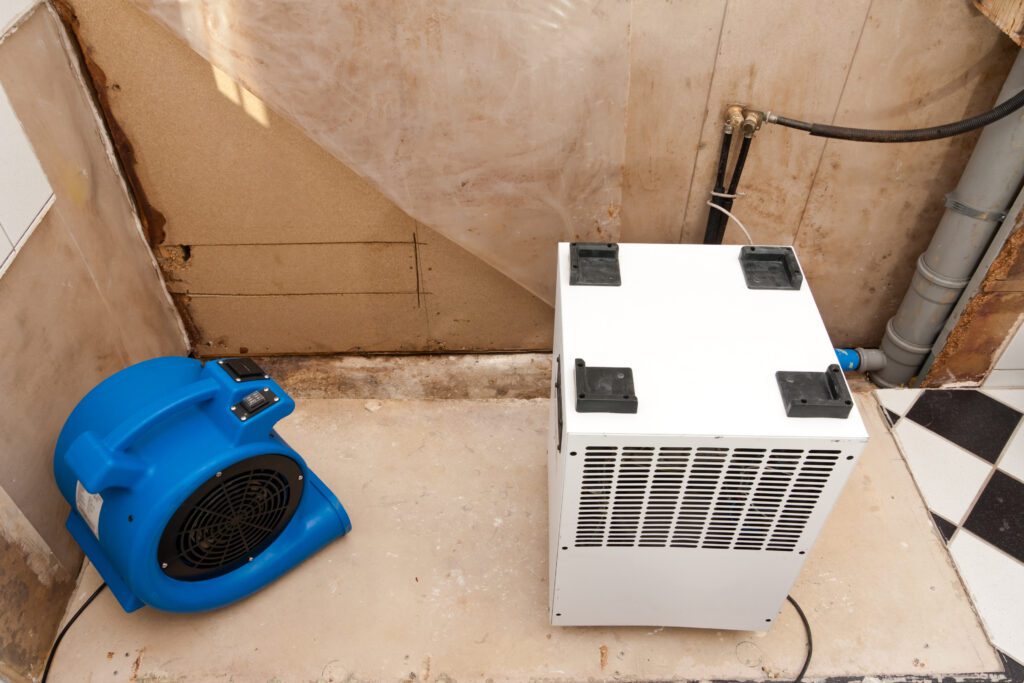A hardwood floor is one of the most popular and practical flooring choices a homeowner can make. But, despite its timeless charm and benefits, hardwood floors are unfortunately susceptible to water damage.
Whether it’s from a burst pipe, appliance leak, flood, or spill, water will absorb into your wood floors and damage the subflooring below. Let’s take a look at the #1 method for drying your hardwood floor.
How to Dry Out Hardwood Floors
If you’ve discovered a puddle of water on your hardwood floor, don’t just throw a few towels down and call it good. Drying out hardwood floors takes a little more time and technique than that. You paid a lot for your hardwood floors, so ensure they last a lifetime by calling a professional restoration company like Same Day Restoration.
We don’t doubt you’ll put your best foot forward when cleaning up water, but Same Day Restoration has the equipment required to prevent future water damage and mold growth. Learn how to prevent your hardwood floor from cupping, buckling, and cracking.

Wet Hardwood Floor Drying Tips
Drying cupped hardwood floors doesn’t have to be a challenge when you call Same Day Restoration. If you insist on drying your hardwood floor yourself, follow the steps below. Remember, depending on the extent of the damage, calling in a professional will help save your hardwood floor from further damage.
How to Dry Hardwood Floor After a Leak
1. Remove Rugs and Furniture
You don’t want to clean your floor with furniture and rugs in the way. Clear your floor of everything before moving to step two. If your belongings are wet, move them outside or to a dry area.
2. Vacuum the Water
But don’t just use any vacuum. Make sure you’re using a wet/dry vacuum which you can find at most home repair and auto part stores. These vacuum cleaners can suction up standing water on your hardwood floors. Continue vacuuming, even if you think you’ve suctioned all the water.

3. Start Scrubbing
Once all water has been extracted, grab a sponge or towel and start scrubbing the floor disinfectant. Doing so will help remove all traces of dirt and debris caught within your hardwood’s pores. After you’ve scrubbed, hit the floor with your wet/dry vacuum again.
4. Dehumidify for 24 Hours
Moisture can hide in the cracks, crevices, and pores of your hardwood floor. Grab a heavy-duty dehumidifier, and leave it on full blast for a full day. This will help prevent any chance of mold growing in your floors.
5. Turn Your Fans On
Set up a few large fans to use in conjunction with your dehumidifier. This helps the dehumidifier work while also circulating the air. Flip on your ceiling fans and air conditioner if you have those, too. The more air circulation, the better.
6. Check for Mold
Mold can grow in as little as 48 hours. Take a look at your floor, and inspect for any spots. If you think you see mold spores, scrub vigorously with a mixture of baking soda and water.
7. Monitor Moisture Levels
Frequently meter-testing your hardwood floor is the best way to uncover any hidden moisture. If you find more moisture in your hardwood floor, leave the dehumidifier and fans running until you get a negative reading.
8. Call Same Day Restoration
If you just read steps one through seven and are thinking about how exhausting that all sounds, save yourself the headache by calling Same Day Restoration. We have all the equipment needed to dry your hardwood floor. Plus, we’ll be on your property in 30 minutes or less. Save your dollars, and don’t DIY sewage damage or water damage.
Dry Hardwood Floors the Easy Way With Same Day Restoration
Since 2007, Same Day Restoration has been the preferred restoration company in Orange County and San Diego. Skip the hard stuff, and leave the hardwood floor to us. Our team of IICRC-certified technicians will be on your property in less than an hour to make things right. Book a service now.
